The majority of articles, tweets, and discussions I view online about Facebook organic reach surrounds the assumption (some would say fact) that organic reach is dead.
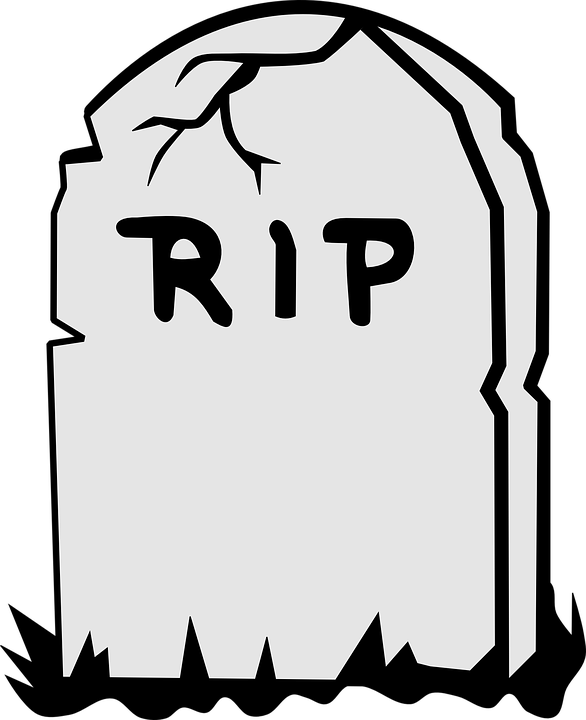
I was in a meeting with the head of marketing for a major dog brand yesterday and to summarize their view on Facebook, “We’re not wasting assets creating content calendars anymore because fans don’t see our content and we’re not paying for them to see it.” Their feelings are justified and so are yours. It’s becoming harder and harder for your content to be seen by your fans and the people that matter. We have clients that have felt the changes of newsfeed reach in a negative way and we are having to rethink what we post, how we post, when we post.
There are exceptions. We are building a brand called Camping With Dogs. It’s part blog, database, and online store for all things camping, hiking, kayaking ect with dogs. Like anyone else starting a Facebook Page, we began with 0 fans and 0 content. The following is data from February 1, 2015, exactly one month after we launched our page, to March 31, 2015.
1. Organic reach does not increase at the same rate as fan growth.
It becomes increasingly more difficult for your organic reach to keep pace with fan growth. If your content is not on point, your organic reach will suffer. The below graph shows how fan growth increased from 200 to almost 7,000 in 2 months but organic post reach hovered around 1,000 for the selected range of data. Still, organic post reach as a percentage of fans is very strong and clearly not dead.
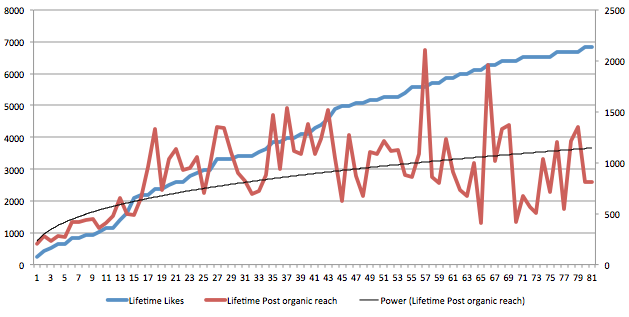
2. Posting frequency and relevancy of content have a strong correlation to organic post reach.
The organic post reach for Camping With Dogs as a percentage of fans is 200% higher than the average organic post reach across most Facebook pages as seen below. One thing to note is that paid reach does have an effect on organic reach and engagement numbers. The following three charts have boxes around dates where posts received paid reach.
The more you post during the day, the less reach you will receive per post. This makes sense because when you post again a few hours later, the relevancy of the previous post decreases. Test different posting frequencies to find the right combination that works for your fans. Also, If your content is not relevant to your fans, do not expect that post to receive a sufficient amount of organic reach. John Loomer points out in his article about Facebook organic reach:
“Users don’t like being sold to. If you share content with the primary goal of getting a sale or install, expect it to perform poorly in the news feed. If you really want people to see it, promote it with an ad.
This shouldn’t have been shocking. Overly promotional content almost never does well. I can tell you from first hand experience that my own content that performs best on Facebook creates discussion. It’s completely unrelated to any product or promotion.”
Ever changing but on the average, this is the average organic reach numbers by audience size (per post), according to Agorapulse Barometer
- Fewer than 1,000 Fans: 25.1%
- 1,000 – 10,000 Fans: 13.8%
- 10,000 – 50,000 Fans: 10.0%
- 50,000 – 100,000 Fans: 9.8%
- More than 100,000 Fans: 7.7%
3. If you can’t build a brand with nothing to sell, how do you expect to build one with something more valuable?
As of right now, Camping With Dogs is little more than posting experiences of doing outdoorsy stuff with your dog. I have nothing to sell- yet. More brands need to focus on experiential content and building a strong community rather than SELL, SELL, SELL. If your brand can not give fans a reason to engage with content completely unrelated to a product or promotion, you have a serious problem.
Engaged users on each post as a percentage of organic reach is very high. For your brand, go back over the past 30, 60, 90 days and look at the points where your engagement rate was really high. Analyze what you were talking about that day, what was the post type, and if there was any paid promotion going on. These spikes in engagement rates are clear signs that you had relevant content to share that day. Now go find ways to create more of it!
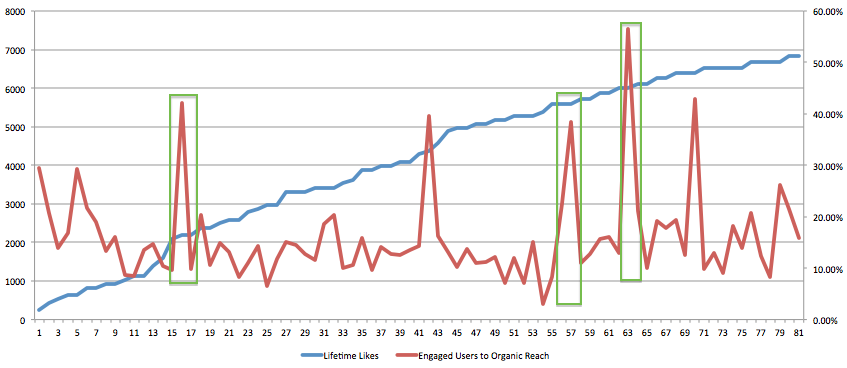
4. Organic post reach as a percentage of fans will decrease over time but your engagement rate should not.
If you have a page that is only receiving 6% newsfeed reach and then only 5% of those fans who saw your content actually engage with it, those are tough numbers to work with. Our average organic reach is 27.66% and the average engaged users as a percentage of organic post reach is 15.96%. Obviously, this is the reverse of what most people argue online about Facebook organic reach dying. My argument is that it all goes back to quality content to your fans and relevancy of content in the eyes of Facebook. Facebook knows that you don’t want to be sold to or receive spammy posts. So, stop doing that! To note: each of the ads highlighted in green had a relevancy score of 10/10. Sure, a Facebook Page about dogs is probably going to do well but there are tons of other accounts about dogs that have low performance scores.
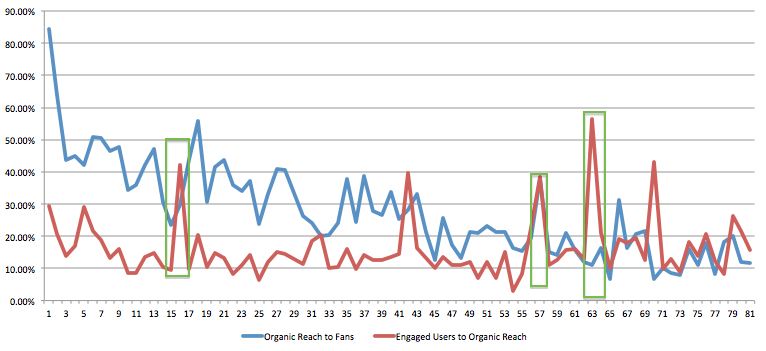
5. Don’t rely on cookie-cutter analytics to make educated decisions.
Facebook provides insights but it won’t give you everything you need. Even the paid options are purely one dimensional. At Parachute, we recommend learning how to use Excel to make custom charts and graphs. Once you understand how to build these, it takes very little time to have a custom view of data.
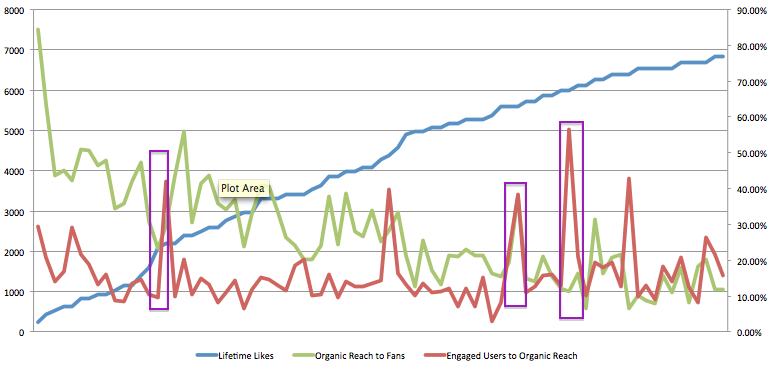
What’s been your experience with organic reach? How have you combatted its decline? Let us know!

